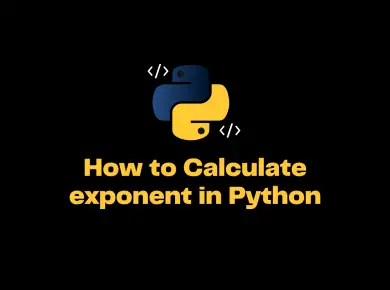The all() function in Python returns True if all the element of an iterable(List, set, dictionary, tuple) is True. If not, it returns False. The all() method returns True if the iterable object is empty.
all() Syntax
The syntax of all() method is
all(iterable)
all() Parameters
The all() function takes iterable as an argument the iterable can be of type list, set, tuple, dictionary, etc.
all() Return Value
The all() method returns a boolean value.
Trueif all of the elements in an iterable is true, In case of empty iterable objectall()returnsTrue.Falseif any of elements in iterable are false
| Condition | Return Value |
|---|---|
| All elements are true | True |
| All elements are false | False |
| One element is true and others are false) | False |
| One element is false and others are true | False |
| Empty Iterable | True |
Difference between any() and all() functions in Python
You can roughly think of any() and all() as series of logical “OR” and “AND” operators in simple terms.
any
any() will return True when at least one of the elements is True.
all
all() will return True only when all the elements are True.
Truth table
+-----------------------------------------+---------+---------+
| | any | all |
+-----------------------------------------+---------+---------+
| All Truthy values | True | True |
+-----------------------------------------+---------+---------+
| All Falsy values | False | False |
+-----------------------------------------+---------+---------+
| One Truthy value (all others are Falsy) | True | False |
+-----------------------------------------+---------+---------+
| One Falsy value (all others are Truthy) | True | False |
+-----------------------------------------+---------+---------+
| Empty Iterable | False | True |
+-----------------------------------------+---------+---------+The empty iterable case is explained in the official documentation as follows,
any – Return True if any element of the iterable is true. If the iterable is empty, return False
all – Return True if all elements of the iterable are true (or if the iterable is empty).
Example 1 – Using all() function on Python Lists
# All the elements in the list are true
list = [1,3,5,7]
print(all(list))
# All the elements in the list are false
list = [0,0,False]
print(all(list))
# Only one element is false
list = [1,5,7,False]
print(all(list))
# Only 1 element is true
list = [0, False, 5]
print(all(list))
# False since its Empty iterable
list = []
print(all(list))Output
True
False
False
False
TrueExample 2 – Using all() function on Python Strings
# Non Empty string returns True
string = "Hello World"
print(all(string))
# 0 is False but the string character of 0 is True
string = '000'
print(all(string))
# True since empty string and not iterable
string = ''
print(all(string))Output
True
True
TrueExample 3 – Using all() function on Python Dictionaries
In the case of a dictionary, if all the keys(not values) of the dictionary are true or if the dictionary is empty, then all() method returns True. Otherwise, it returns False.
# All elements in dictionary are true
dict = {1: 'Hello', 2: 'World'}
print(all(dict))
# All elements in dictionary are false
dict = {0: 'Hello', False: 'World'}
print(all(dict))
# Some of the elements in dictionary are true but one is false
dict = {1: 'Hello', 2: 'World', False: 'Welcome'}
print(all(dict))
# Empty Dictionary returns True
dict = {}
print(all(dict))
Output
True
False
False
TrueExample 4 – Using all() function on Python Tuples
# All elements of tuple are true
t = (1, 2, 3, 4)
print(all(t))
# All elements of tuple are false
t = (0, False, False)
print(all(t))
# Some elements of tuple are true while others are false
t = (5, 0, 3, 1, False)
print(all(t))
# Empty tuple returns True
t = ()
print(all(t))
Output
True
False
False
TrueExample 5 – Using all() function on Python Sets
# All elements of set are true
s = {1, 2, 3, 4}
print(all(s))
# All elements of set are false
s = {0, 0, False}
print(all(s))
# Some elements of set are true while others are false
s = {1, 2, 3, 0, False}
print(all(s))
# Empty set returns True
s = {}
print(all(s))
Output
True
False
False
True

![[Solved] Typeerror: Cannot Unpack Non-Iterable Nonetype Object 3 Typeerror: Cannot Unpack Non-Iterable Nonetype Object](https://itsmycode.com/wp-content/uploads/2022/05/TypeError-cannot-unpack-non-iterable-NoneType-object-390x290.png)

![[Solved] Typeerror: Missing 2 Required Positional Arguments 5 Typeerror: Missing 2 Required Positional Arguments](https://itsmycode.com/wp-content/uploads/2022/06/TypeError-missing-2-required-positional-argument-390x290.png)
![[Solved] Syntaxerror: Positional Argument Follows Keyword Argument 6 Syntaxerror: Positional Argument Follows Keyword Argument](https://itsmycode.com/wp-content/uploads/2022/03/SyntaxError-Positional-argument-follows-keyword-argument-390x290.png)